


Get to know Iceland
With a degree in civil engineering and a passion for biking, Tyler Wacker talks about moving from San Francisco to one of the most remote places in Iceland, Westfjords. He sold all of his belongings, cycled for eight months across the United States, and finally moved to Iceland to study Coastal Communities and Regional Development. Slowing down in life and appreciating the little things is one of the dearest lessons from the last few years. Little did he know Lonely Planet will award Westfjords as the Top 10 regions for 2022.
I didn’t expect to end up in Iceland. I am a graduate student of Haskolasetur Vestfjarda/The University Center of the Westfjords. I had found the program in 2017, and I followed it for a few years, and it looked interesting. It was amazingly cheap compared to the United States grad school. Housing was also relatively affordable. Going back to school was always on my mind, but school wasn’t a priority. It was a way to move or live abroad.
I can do two years of grad school in the program here. You only have to do one year of coursework in the Westfjords, and then you can write your thesis about whatever you want and from wherever you want to write it. Most of my classmates are back to where they came from or studying new environments, not Iceland.
However, I’ve decided to invest more in my life in Iceland.
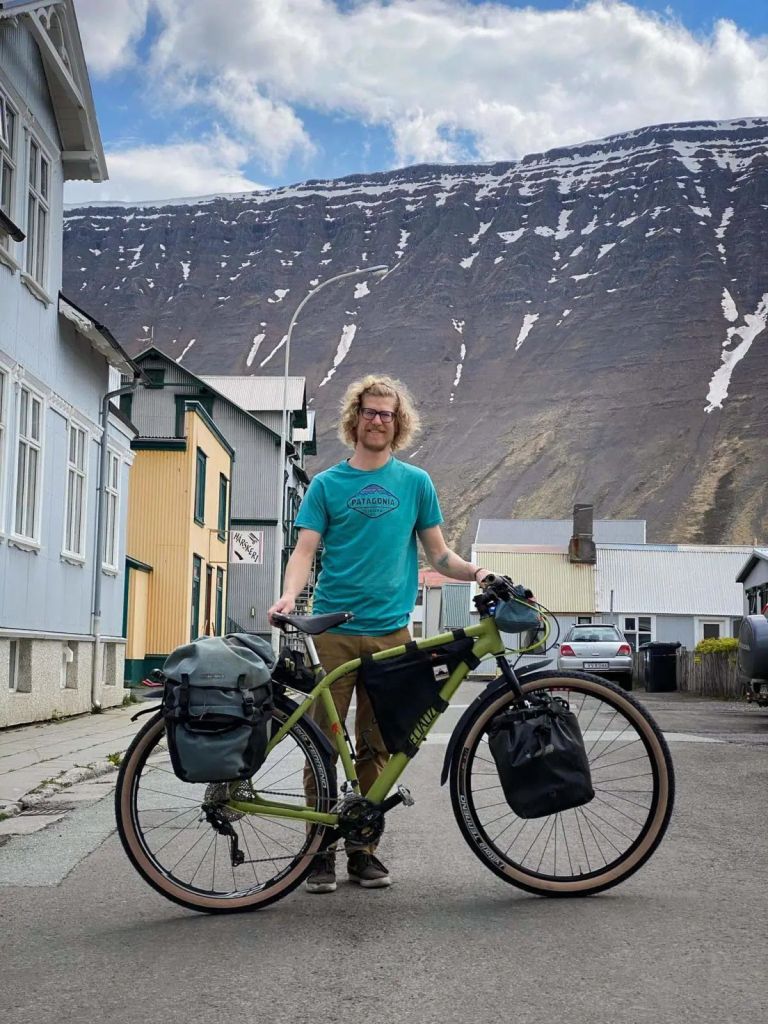
One of the reasons I continue to stay is that I want to invest in this place. I am writing about Iceland, and I’m studying if the universal basic income would be a good tool for regional development and solving some of the social issues in Iceland. One of the biggest is the brain drain from rural Iceland. They go to school in Reykjavik or Akureyri and then stay there.
If you look at the age demographics of these small communities, there’s a significant gap between 20 and 35. Once they’re 35, people start thinking about children and the life they used to live and might want that for their children. That’s when you see people moving back. Unfortunately, this gap is why there are not as many innovative ideas coming out of these places. Those new ideas are generally coming from that age group.
Before coming to Iceland, I had a relatively traditional upbringing in the United States. I was raised in a Christian family, going to church every Sunday. My parents told me that if I got a good education and a good job, I could generally do whatever I wanted. So I went to university, as most people do in the States these days, and got a four-year undergrad degree in civil engineering. A week after I graduated from university, I started working for a big engineering firm. We worked on highway projects, but it wasn’t my passion.
I don’t believe in highways.
So, after a year, I switched firms and started doing more big-box retail, like the Walmarts and the Costcos. So I worked on basically understanding what their traffic impacts would be like. How many people come to these places, and where will they all go? Do they need a traffic signal? Do they need a roundabout, a turn lane, or something like that for these significant developments?
In some sense, highways are okay: for longer distances and connecting different regions, cities, etc. But when you put highways through urban areas, they go through traditionally black and other minority neighborhoods. Because, at least in a United States context, they are the lowest land values. And when a highway goes through an area like that, it divides it, creating this humongous barrier, breaking up communities, and creating traffic noise, congestion, and pollution. These minority neighborhoods with a highway through them have more extensive health issues, causing less wealthy people more problems they can’t afford. By understanding the effects of highways, you switch towards the bike infrastructure.
There’s certainly a difference in infrastructure opinions between the United States and Iceland. Just with the driving behavior. Let’s take Reykjavik; there are a lot of bicycle paths. Sometimes you do have to bike on the road, and there may not be a bike lane there. Because driving behavior is generally a little less aggressive than in the United States, that’s more accepted here than it is in the US.
The lack of space usually comes with putting a bike lane on a car traveled road. Or there wasn’t the proper planning to create these separated bypasses to connect you all over the city. Generally, the people in the United States are fighting for space for bicyclists. Your only option is that big road. While here, you know not to bike on the main streets, and you don’t have to because there is bike infrastructure.
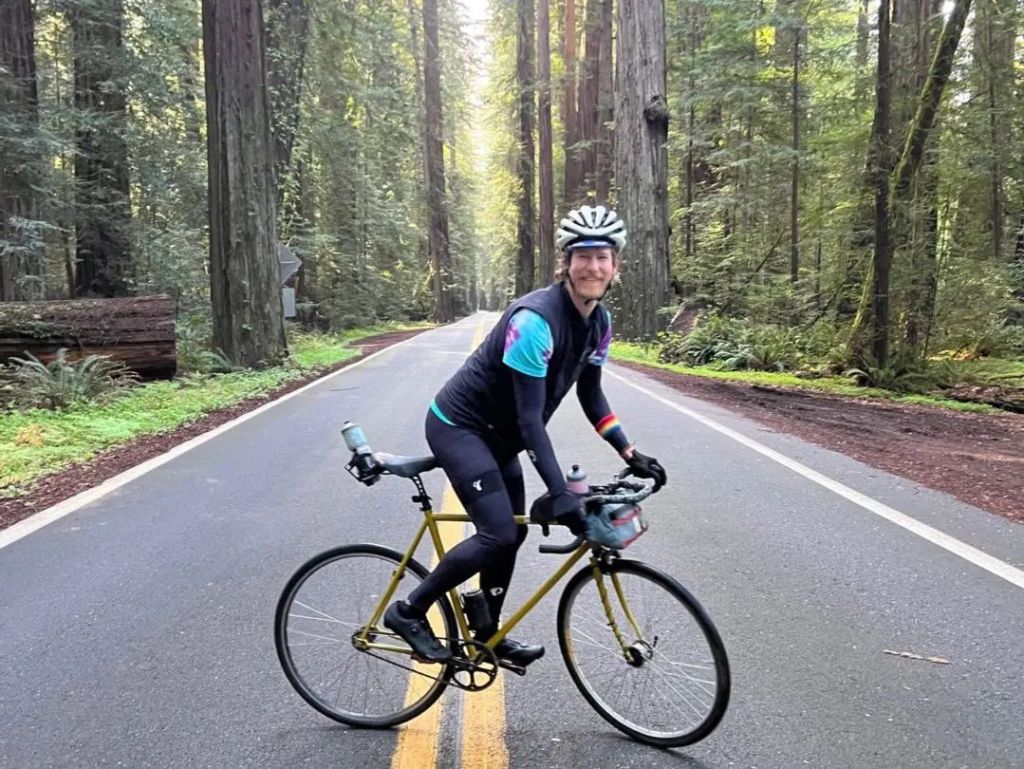
I started riding more when I was an undergrad. I moved five kilometers away from campus. Luckily it was the type of street that didn’t have a lot of traffic. So I was learning on these lower-stress streets that I could make mistakes because it didn’t mean that I would get hit by a car all the time. It’s so much fun to be on a bike and have a road to yourself when you get to swerve all over it and goof off as you did as a kid. [smiles]
After realizing the big highway projects were not for me, I started getting into some smaller projects that questioned the street network as we know it. So I did some research and studies of my own that would abandon streets to create a park or change one-way roads to two-way roads. That merged into understanding more about bicycle infrastructure. So there was a lot of bicycle-related talk about these projects. What about bike lanes? Can we include those now? My conversations changed from how we get cars to these big developments to how we get bikes to these places? And so I was looking at streets and how to improve them for bicycling.
At this point in my career? Two or three years out of university, I was mainly in Dallas, Fort Worth, Texas. What’s considered a metroplex. So the projects were all over that region. Unfortunately, Texas didn’t have much money for bicycle infrastructure, and the political will wasn’t necessarily there. It just wasn’t their priority.
So I moved to California, where there’s more funding for bicycle infrastructure on all federal, state, and city levels. There’s more political will, more funding, and more consensus on what we should be investing in. I worked full-time on bicycle infrastructure for two or three years. So I was doing that during the day. And then, being in San Francisco, I was biking quite a bit: to work, across the Golden Gate Bridge to Marin. It was cool. I did a lot of running back then as well. And then I sailed quite a bit in San Francisco too. I bought a boat and learned the hard way how to sail.
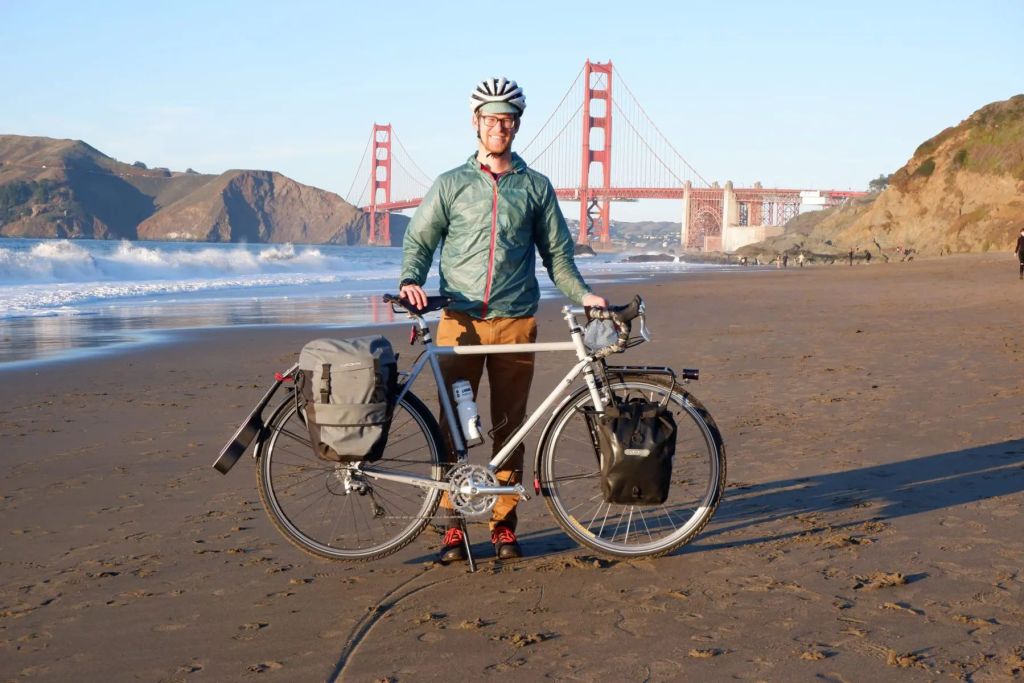
By buying a boat. [laughs] After realizing that I did not know what I was doing, I took sailing lessons. Crazy! I bought a boat and motored it for a lot of the way, but then I sailed a little bit. That was my first time generally sailing under my direction. And I had a friend with me, too, yet not fully prepared for what we got into. Anyone can buy a boat; anybody can go sailing. There’s no regulation. It’s kind of crazy. [laughs]
No. I sold all of my things in the United States because the missing gap here is that I quit my job at the beginning of 2020. And then, I started grad school in August of 2020. So within those eight months, I biked across the United States.
That was important because I started to question my life assumptions of what we need to live. I was in the weather for most days, and I lived in a tent during those eight months. I think it was necessary for me to transition to this life in the Westfjords because if I came straight from San Francisco would have been the biggest shock.
I was coming out of a professional mindset of working 50 hours a week. And being, go, go, go, go, go! That would have been a huge cultural shock to come to the more relaxed pace of the Icelandic work style.
It’s on the bucket list to own a boat again. I sailed a little bit here in the Westfjords with Aurora Arctica, a sailboat tourism company. But nothing like I was doing in San Francisco and having my boat. The weather is so, so much harder to sail here. It is also the visibility between fog and clouds and rain. I think I’m a fair-weather sailor, though. I enjoy the tropicalness of it. San Francisco isn’t warm or tropical, but it’s warmer than here. I haven’t learned all the cold water sailing techniques since living here. But I’d like to own a boat again, someday in a warm sunny place, and sail around.
By living on the road for eight months, I became grateful for that restaurant on the route or a place to get coffee on a particular day. That reprogrammed my brain to be like, Hey, there are only two coffee shops in Isafjordur. But as long as we have one, as long as I can get a decent latte, that’s all I need. I don’t need the San Francisco level where you have too many choices. You walk out the door, and if you live in the urban core, you have five options of a coffee shop.
I didn’t bike having that in mind. That was after the fact. I wasn’t ready to take the next step in my engineering career; I felt like I had to lose my passion or my passionate side.
I had to focus more on managing numbers, budgets, and people to succeed at this company. And I wasn’t ready.
There was a significant conflict in my head. I needed to work within the limitations and restrictions of the job. Maybe the budget is one of them or the person you’re working for. Since I was a consultant, clients weren’t interested in changing the world or having different ideas. That was a big, significant conflict in my head; that is why I left. So I decided to apply for the Icelandic program finally. And I did that after I quit my job after I had been biking for a bit.
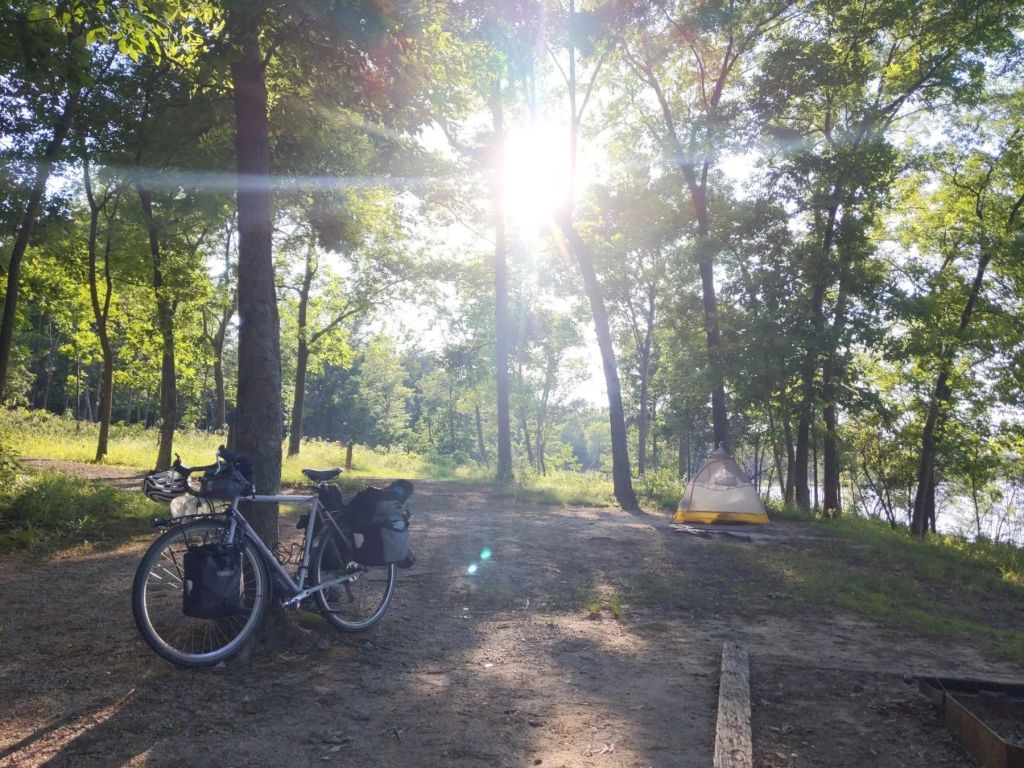
So I went from San Francisco to San Diego down the coast of California, and then from San Diego, I planned to go all the way to Florida. But then I made it across Texas and into Louisiana. By that time, the pandemic got uncertain; there were a lot of lockdowns. Luckily I was close to my parents’ house in Texas. I took two and a half months off just when I got accepted into the program.
It worked out because I did the paperwork needed for my visa. From there, I changed my route. So I went from Texas to Minneapolis, South to the North, across the United States, and from Minneapolis to Boston.
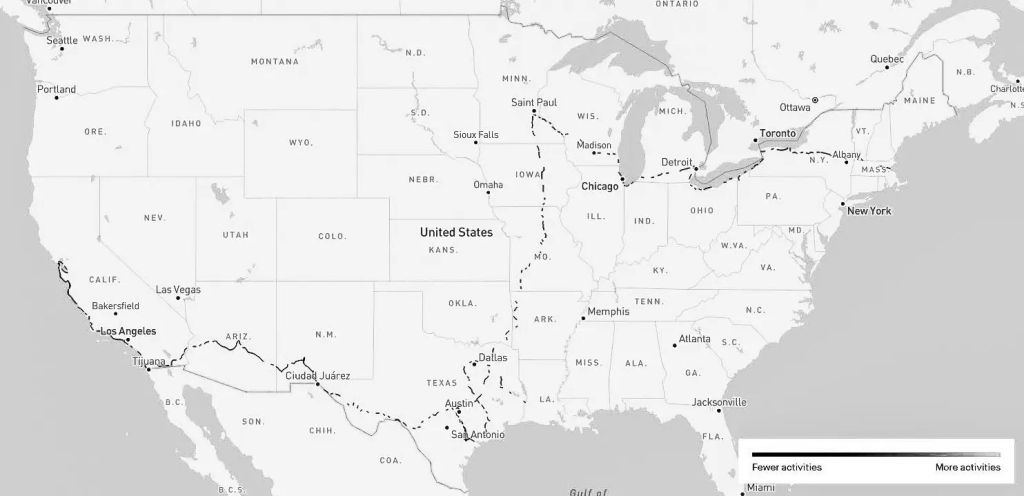
I’ve made a couple of bike trips in Iceland by now. I ended my US biking trip in Boston and then flew to Keflavik. So I biked from Keflavik to Westfjords in six days. And then last year, with the Westfjords Way route becoming more popular, I biked that. It took two weeks to bike around the Westfjords. I researched what bicycle infrastructure is out there and what is necessary for bicycle tourism—looping it back to my previous infrastructure work.
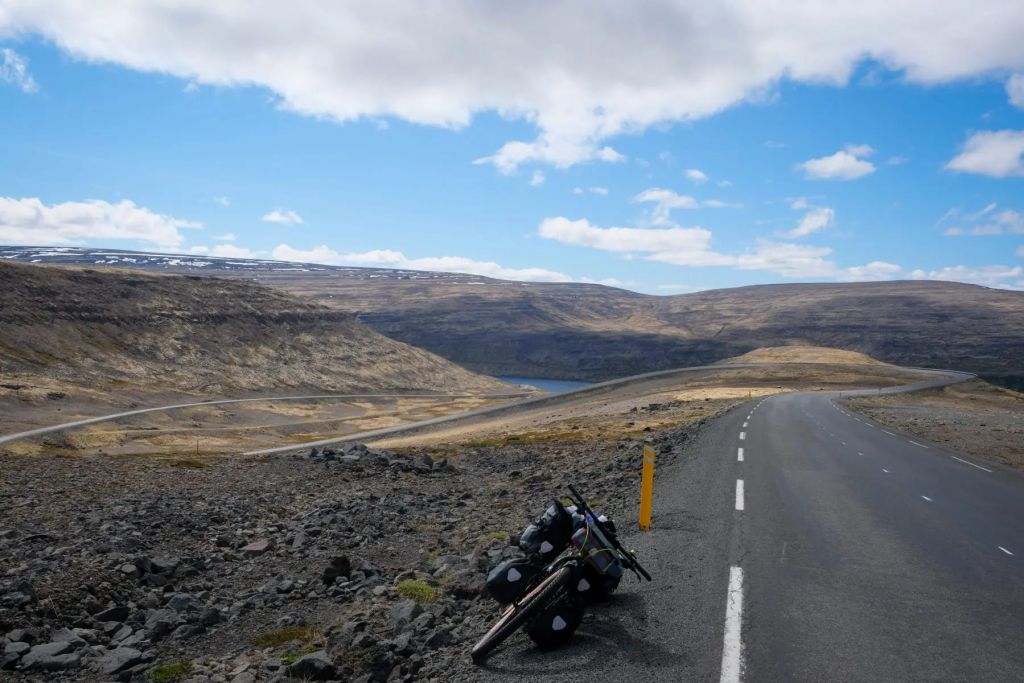
We don’t necessarily need to put bike lanes on all the roads of the Westfjords. There’s no space for them, but the driving behavior is different. And there’s not as much traffic in the Westfjords. When I was riding, people had enough space to pass me comfortably. And there wasn’t any time that there was oncoming traffic. But now, with the tourism coming back as it was before the pandemic, you can run into a situation where you’re going 90 kilometers an hour in the middle of the Westfjords. You have a bicyclist ahead of you and a car coming from the other direction. So fingers crossed that the driving behavior stays safely, and people are more willing not to be super aggressive.
Your reaction time to do something depends on factors when driving a car. Maybe you are mad that a song’s playing. We have to keep this friendly driving until we find a solution with existing road infrastructure to make it safer for the bikers.
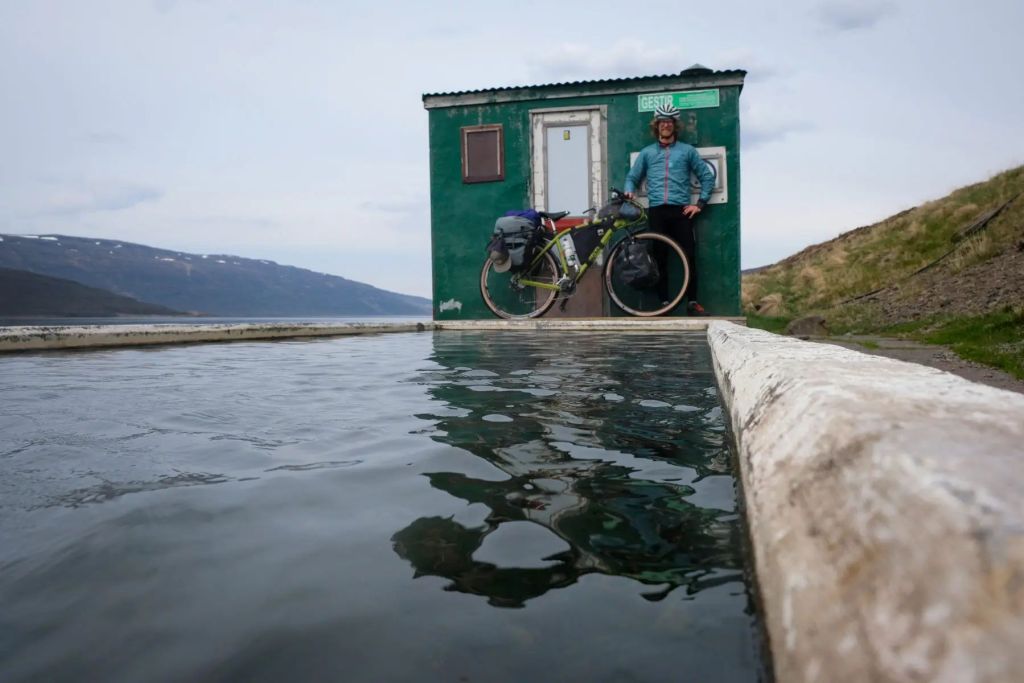
Earlier, you talked about people coming back to Westfjords. If more people come back to the small communities, it will be more traffic. So in a way, we want them to come back, but at the same time, what’s the solution? How do you keep the friendliness and not the aggressiveness of a bigger city?
I don’t know if that’s avoidable. As people become a driver, you get this sense of entitlement that you own the road, and there’s nothing that can stop them. And that builds up the more and more you drive. When you start driving, you’re nervous and taking your time. But as you get more confident as a driver, you’re less willing to take your time. I hope we, drivers out there, relax.
These are bicyclists. These are people on holiday or out to increase their fitness.
But that’s something that’s always been lost on me. Why do drivers get so angry at bicyclists when the impact of slowing down is maybe 10 to 20 seconds. And you don’t even feel it at the end of the day when you get to your destination.
I think there’s a great community here of bicyclists. There’s a lot of mountain biking and many children riding bikes. You don’t have to lock up your bike, which is a huge benefit here on the Westfjords. However, there is the biggest culture shock that I haven’t found a way to adjust to.
Three roads leave my town: you can bike to the end of the one to the North. That’s about 40 km. You can bike to the West, but you have to go through a tunnel, which isn’t as doable. As long as you have lights and reflective gear, it’s okay. Or you can bike as far South as you want to. But then you have to turn around and come back.
In San Francisco, we would just make loops and see something new. Here I’m going to go straight South, and I will come back straight North. I’ve ridden these roads; that’s where my touring mentality and linking these incredible experiences with a bike fall a little short in the daily life of the Westfjords.
But community-wise, many people do bike. There’s currently snow, but there are many options to go over the mountains once the snow melts. I need to get more into off-road riding rather than road riding. That’s where new experiences will come for me.
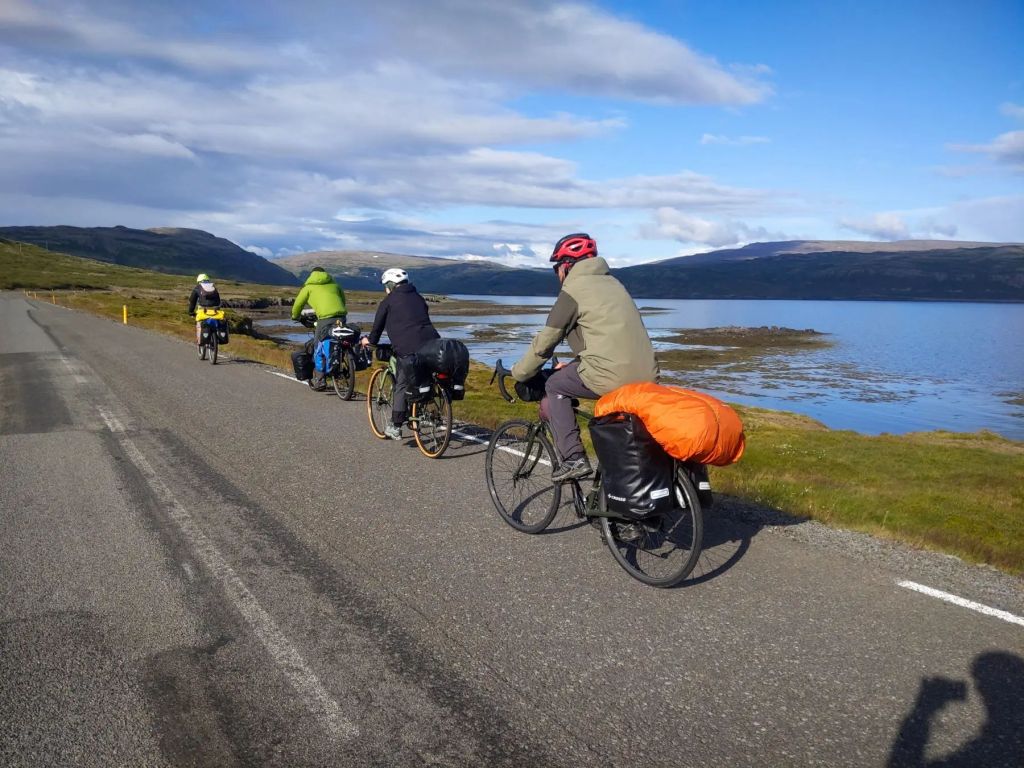
No, I’ve never done that. I don’t think I will anymore. If I were to do anything on Route 1, I would bike to Seyðisfjörður to take the ferry. But I would probably get into the Northern region and take the Arctic Coast Way Route. I tell people about the Ring Road being for cars. It’s made for cars to travel around this country as fast as possible. Generally, it’s not covering any mountain passes, it’s relatively flat, but it connects the country in a meaningful way. The goal is to have no significant accidents.
We don’t want any bicyclists to get hurt. And that’s the goal of infrastructure: to create a safer environment where people are comfortable biking.
But it can certainly be dangerous in Iceland too. There are a lot of factors. If it’s windy one day and the winds push you onto the road rather than off the road. And so, I think you could run into those situations where a gust of wind puts you where you don’t expect to be. That could create an accident.
It takes a lot to find the right people to ride with on multi-day trips. In Iceland, you have to take into account the weather. If it is windy, maybe you shouldn’t bike. I recommend coming with someone.
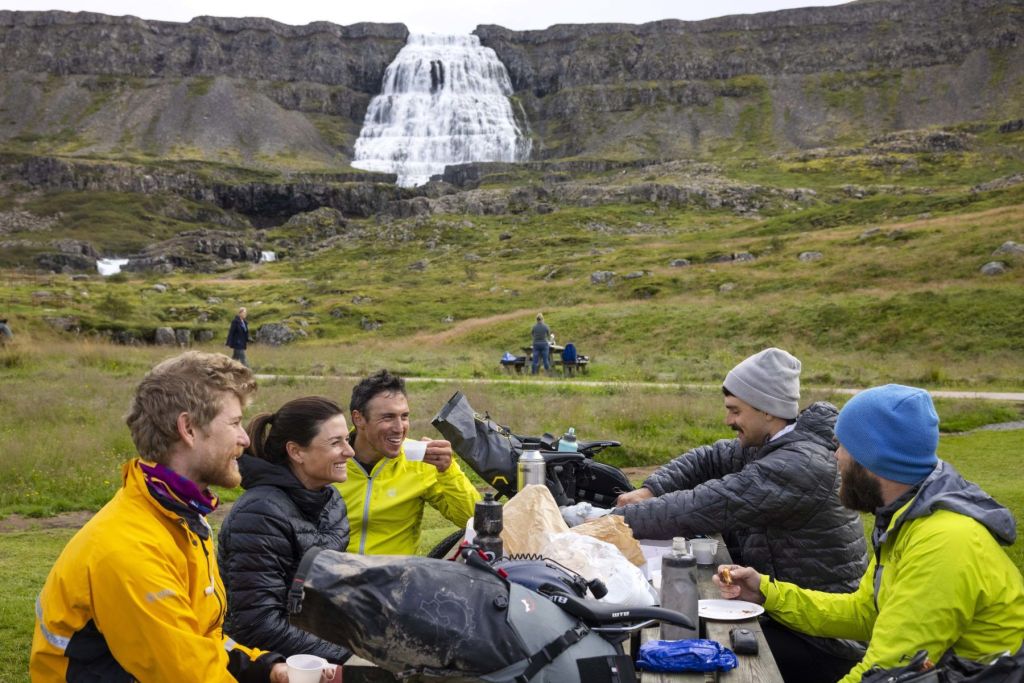
But also, there’s a lot of people that ride here. There are some days when you can connect with people. It’s enjoyable to connect and hang out. Be at the same campground and have conversations, especially if traveling solo. However, it’s essential realizing that you’re each on your own journey.
Keep in mind what your trip is for you rather than if you meet someone.
There are so many different types of biking for touring in terms of distances, how and where you sleep when you wake up, and where you choose to spend money; those factors line up. It’s lovely, and it’s fun. But also realizing that if those factors aren’t lining up, that it’s okay. Make your trip as you wish.
I always fly with my bike. Usually, that involves a bike fee at the airport. It’s a little bit of an added cost for the trip, but usually, I travel with a cardboard box if I’m going for a big touring trip. The cool thing about Iceland is a bike pit to assemble your bike right at the airport. It’s a container that has tools. I’ve never done it myself, but there are always cardboard boxes; people leave them there. And they’re out biking the country, and then you come back, and you can box your bike up in when you get back to the airport.
1. There are just great hotpots around the west fjords. I think it is unique to this region. If you’re traveling, you can find a new hotpot each day that you’re traveling here. So I’d recommend doing some hunting on those.
2. There’s a Leif Erikson Center. He was born right there, and it was technically the Western region of Iceland, but it’s close to the Westfjords. Over the past year, it has finally been proven that Leif Erikson and his partner discovered America around 1000. It does an outstanding job of showing what they did. It’ll be cool to see how that exhibit changes its narrative. They have this disclaimer not being proven fully yet, but that will change now, being a piece of Icelandic history.
3. Another place to visit is Litlibær. It’s a farm. [laughs] Of course, it’s a farm! But now it’s a coffee shop/waffle house. It’s tiny, and at one point, 20 people lived in this house between three or four families back in the 1800s. An Icelandic organization took it over in the 90s; they restored it. Now it’s this coffee/waffle shop in this cool turf house. They have fantastic cheesecake. Everything they serve is delicious. It’s in the middle of nowhere, as most things are here in the Westfjords, but this one is in the middle of nowhere. You don’t expect it, but it’s an excellent spot.
4. One of the craziest museums I’ve been to in Iceland was the Icelandic Witchcraft and Sorcery Museum. It’s eye-opening. Indeed, some weird things about witchcraft and sorcery have happened in the Westfjords. And I won’t say more not to spoil it for the visitors.
When you’re traveling abroad, many people want to plan out your day by day by day. But when you’re camping, Iceland is a place where you don’t necessarily have to plan everything. That’s just an experience that we’re missing in life. So I would try and embrace that as much as possible. It’s easy to end up in a place you didn’t expect when yoiu’re camping. So if you’re taking a camper van around Iceland, don’t have such a strict itinerary of we have to do this, we have to do that. Go with the flow because you don’t need reservations to camp, and you can camp almost anywhere, in any village, there’s a campground.
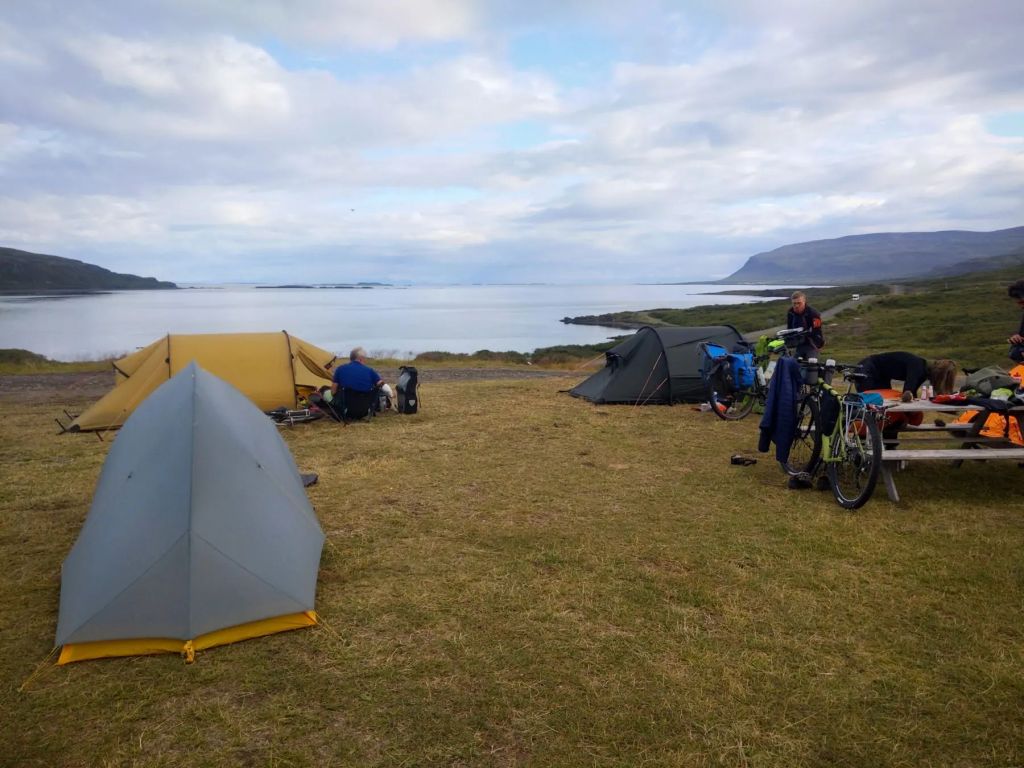
I do enjoy the Laugavegur trail. I was able to do that last summer, and we had terrific weather. There are huts and everything. At the end of each day, you have a nice little place to hang out and meet other people. It’s not like you have to do that, but it’s how it works out because of the distances between the huts.
I made some connections on the Laugavegur trail because everyone ended up at the huts. No matter what time we started in the day, we either passed the same people or saw the same people hike with the same people. And those connections are enjoyable.
I am part of an organization called Cycling Westfjords. We recently started at the end of last year, and it’s myself and three other Icelanders who are avid cyclists. We give people the best tips for traveling to the Westfjords and getting here with a bike. And so, within the Westfjords, we’ve created this passport system. Like the El Camino Santiago in Spain, you can hike or bike it; you get this passport and stamps in different areas to prove that you did it. In our case, you don’t get a stamp for each place. But when you get back to Isafjordur, you demonstrate that you did the route through pictures and/or tracking your ride on a GPS tracking app. And then you get the certificate of achievement. It’s like, Hey, you biked the Westfjords, and you are a distinguished bicyclist in the world.
We have Iceland’s so-called Second Ring Road, a fantastic loop that people can do. We’re partnered with local businesses, and they love bicyclists. You can get a discount on a coffee and cake, accommodation, etc. We charge a hundred euros for our services, but you get your money back from all the deals that we have across the region. We help self-supported cyclists, so we are also helpful from a trip planning standpoint.
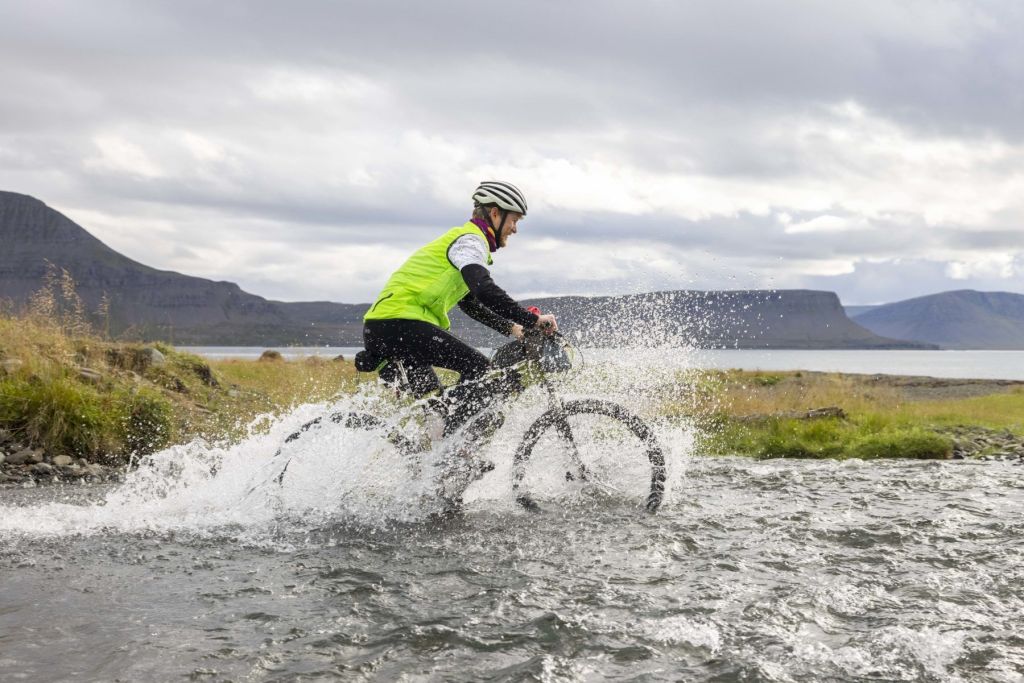
Hopefully, the race will facilitate and create a sense of camaraderie. You always find your group when biking in a race like that. There are always these people riding the same style. In one of my first big organized races, I was one of the slowest ones at the back of the pack. But then there were all the other slow people, and we just bonded. And so those are friends that I have to this day. Even after a few years of being away from San Francisco, I still keep in touch with these people. They’re still on their bike ventures; I’m on my own grand adventures after being the slowest ones back in our group ride.
If you want to learn more about Tyler, make sure you follow him on Instagram or listen to the conversation on Travelling Inside Out where he was a guest. Tyler talks about challenging your comfort zone, going against the grain, and the importance of taking the time to understand who you are as a person.
All pictures courtesy of Tyler Wacker.

CampEasy Opening hours 09:00-16:00
Learn more about Self-Service
A minimum of 20 hours notice is required to use the booking engine. Click here to contact us directly for a booking less than 20 hours from now.
Change Date